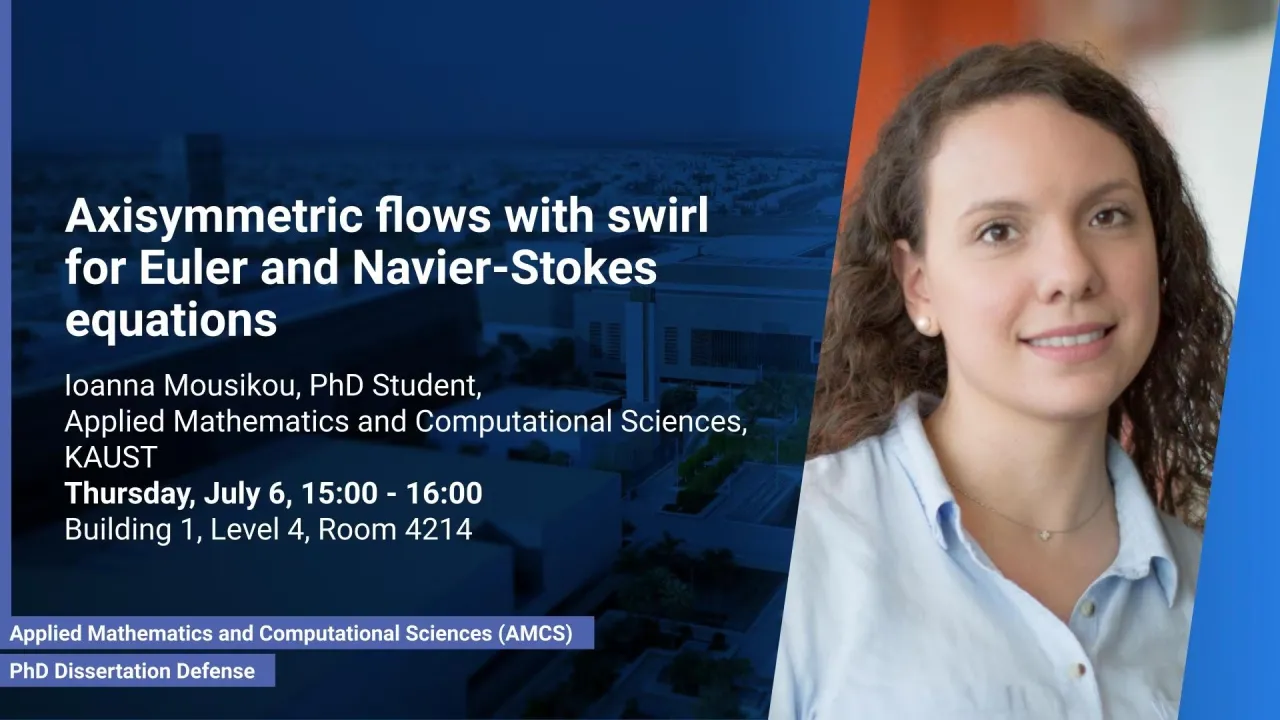
Axisymmetric flows with swirl for Euler and Navier-Stokes equations
We consider the incompressible axisymmetric Navier-Stokes equations as an idealized model of tornado-like flows. Assuming that an infinite vortex line that interacts with a boundary surface resembles the tornado core, we look for stationary self-similar solutions of the axisymmetric Euler and the axisymmetric Navier-Stokes equations emphasizing the connection among them as the viscosity ν → 0.
Overview
Abstract
We consider the incompressible axisymmetric Navier-Stokes equations as an idealized model of tornado-like flows. Assuming that an infinite vortex line that interacts with a boundary surface resembles the tornado core, we look for stationary self-similar solutions of the axisymmetric Euler and the axisymmetric Navier-Stokes equations emphasizing the connection among them as the viscosity ν → 0. We construct a class of explicit stationary solutions for axisymmetric Euler equations and prove that solutions of self-similar Euler equations with slip discontinuity at a finite number of points do not exist in this framework. This nonexistence result is then extended to a class of flows with mass input or loss through the vortex line and to conical flows. Moreover, a study of the system of self-similar axisymmetric Navier-Stokes equations provides a-priori bounds and information about the configuration of their solutions which are then verified by solving it numerically. Using techniques that are motivated by the theory of viscosity approximation for Riemann problems in conservation laws, we also prove that, under certain assumptions, solutions of axisymmetric Navier-Stokes equations converge to solutions of axisymmetric Euler equations as ν → 0. This allows us to characterize the type of Euler solutions that exist.
In addition, a new approach is proposed for solving the one-dimensional system of elastodynamics. The main idea of this approach involves the method of gradient descent to solve an implicit scheme with a constrained variational formulation and the discontinuous Galerkin finite element methods to discretize in space. The resulting optimization scheme performs well, it has an advantage in handling oscillations near shocks, and a disadvantage in computational cost, which can be partly alleviated by using techniques on step selection from optimization methods.
Brief Biography
Ms. Ioanna Mousikou is a Ph.D. candidate in the Applied Mathematics and Computational Science program at the King Abdullah University of Science and Technology (KAUST). During her second year at KAUST, she received a Master's degree in Applied Mathematics. Before joining KAUST, Ioanna obtained an undergraduate degree in Mathematics at the University of Cyprus.

